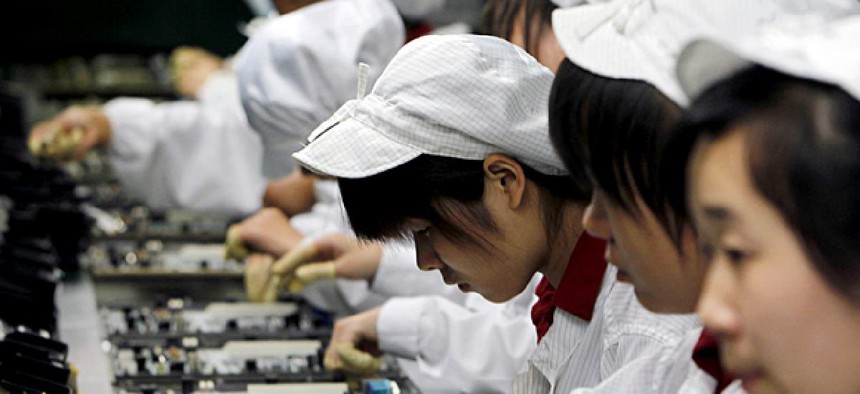What Apple's all-American factory of the future might look like

Staff members work on the production line making Apple products at the Foxconn complex in Shenzhen, China Kin Cheung/AP File Photo
The company's past and the current economy may offer a picture of their future stateside factory.
When Apple CEO Tim Cook revealed in an interview with Brian Williams airing Thursday night that Apple will begin building Macs in the United States next year, that's about all he said: We're coming to America — no how, no where, not even really a when. But strange as a stateside Apple factory may seem, Cook's comments come amid a wave of enthusiasm for producing things here. Two stories on the topic in the current issue of The Atlantic, along with a look at the challenges of Apple's past and the American economy's present, may offer a small window into Made in the U.S.A., Apple edition.
Once upon a time in America — the '80s, to be exact — Apple made its computers at the original Mac factory in Fremont, California (pictured here, via Flickr user JoshCUK). Developing the company's new factory, of course, won't be as simple as replacing those dated clunkers with skinny new iMacs: the Fremont factory, after all, failed. Part of the trouble, as explained in this two-part video tour, had to do with design flaws like conveyor belts that led to "excessive handling" and this inefficient ASRS system that "indicates high inventory and poor supply chain performance":
There was a basketball court, but Apple's 22nd-century-looking campus should handle the company's buildings in the looks department. What Apple wasn't able to handle in the U.S. the first time around was efficiency, something its notoriously dogged Foxconn plant has been able to achieve with "breathtaking" speed and flexibility, asa New York Times investigation reported earlier this year. Who needs basketball courts, the "iEconomy" seems to say, when you've got robots?
NEXT STORY: The FCC joins the gadgets-on-flights fight


